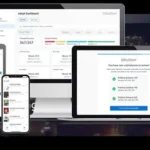What is a blue alert? The Blue Alert is essential because it protects the public and police. People in the US must stay safe, so many warning systems are in place to help. This alert system aims to quickly inform people about threats to law enforcement and keep them on guard.
What Is A Blue Alert?
Blue Alert is an Emergency Alert System (EAS) message broadcast by city, state, or federal police. A Blue Alert alerts people when police are attacked, hurt, or murdered. Still on the run, the suspect. This is similar to AMBER Alerts, which notify of captured children. An important message about the crime, the suspect, and any involved cars is sent out with a Blue Alert. The people can then help find and arrest the person who did it. It’s essential to get the word out right away to stop more violence and make sure that everyone is safe, even police agents.
Read on what is a blue alert.
Also Read N: What Is Resin And Its Variants?
How Blue Alert Works?

It’s essential to know the following things to understand what Blue Alerts are and how they work entirely:
Criteria For Issuing A Blue Alert
Before a Blue Alert is sent, certain things have to happen. There must have been a confirmed attack on a police officer, the suspect must pose a significant threat to the public or other officers, and there must be enough information about the suspect or their vehicle. These strict rules ensure that Blue Alerts are used correctly.
Here you will learn what is a blue alert and how it works.
Communication Channels Used
Blue Alerts can be sent to as many people as possible in many ways. These sites include the Emergency Alert System (EAS), Wireless Emergency Alerts (WEA), social media, and news providers. Many communication tools make it easy for the government to quickly inform people about what’s going on and ask for their help.
Role Of Law Enforcement Agencies
The cops in each state, city, and country work closely when Blue Alerts are sent out. People can be sure that the information they get from this partnership is right and up to date. They are in charge of proving the danger, getting more information, and ensuring the warning gets to everyone who needs it.
Public Involvement
When a Blue Alert goes out, people need to take action. They are being asked to be careful and share any details that could help find the person who did it. When people in the community work together, they have a much better chance of finding the person and stopping further harm.
Also Read P: What Is DD Osama Full Name And His Early Life?
Comparison Of Blue Alerts with Other Alerts
Blue Alerts are like Silver Alerts and AMBER Alerts, but they all do different things. To report a theft, use an Amber Alert. To report an older person missing, use a Silver Alert. Knowing these differences is essential to understanding each alert and how to respond properly.
Recent Examples Of Blue Alerts
Seeing examples of Blue Alerts being used right now can help you determine how well they work. Case studies show how the warning system was used, what people did, and what got resolved. These cases show how important it is to use Blue Alerts to keep people safe.
Impact Of Blue Alert On Community Safety
When there is a blue alert, everyone is much safer. These alerts quickly let people know about risks so they can take the right steps to help the police do their job. People are more likely to work together when there are blue alerts. This builds community and a sense of purpose to keep police officers safe.
Technological Advancements Of Blue Alert
Blue Alerts are more valuable now that technology is better. Better phone systems, communication systems, and social media sites have enabled alerts to reach more people and spread faster. Things keep getting better with technology, which makes the Blue Alert system even more vital.
Challenges And Considerations For Blue Alert
Blue Alerts are helpful, but they do have some issues, such as the fact that people may need to pay more attention to them and the need for clear, correct information. How quickly alerts are sent out and how many false warnings are sent out should be considered.

In the above article, what is a blue alert we covered all topics related to it.
Conclusion
Blue Alerts are a big part of public safety in the US. Police officers need up-to-date information about risks at the right time, and these alerts do just that. They help stop more violence and catch crooks. Police must work together, modern communication tools must be used, and the public must be involved for Blue Alerts to work. The alert system is still being worked on to improve it, but it is already a great way to keep our areas safe.
FAQ
What Should I Do When I Get A Blue Alert?
Read the news often, and be careful if you get a Blue Alert. Please pay close attention to the essential parts of the alert, like how the suspect and their car are mentioned. Tell the cops anything they need to know, but don’t try to catch the suspect yourself.
How Often Do Blue Alerts Happen?
Blue alerts are sent out at different frequencies based on the frequency of attacks on cops. They don’t come out as often as other alerts, but each one is important, and everyone should pay attention to it.
How Do I Learn About Blue Alerts?
Facebook, the local news, and emergency alert apps on your phone are just a few ways you can stay up to date on Blue Alerts. Sign up for alerts from your local police force to keep current.
Are Blue Alerts An Excellent Way To Find Criminals?
Blue alerts have been beneficial at times. They make it more likely that suspects will be found and arrested. Get the word out quickly. This message will only work if people read and do something about it.
Sources:
https://en.wikipedia.org/wiki/National_Blue_Alert_Act_of_2013
https://www.wate.com/news/tennessee/what-is-a-blue-alert-2/?nxsparam=2
https://www.wbir.com/article/news/local/blue-alert-tbi/51-80a88e4f-e5b3-49d8-a873-82d934142355










